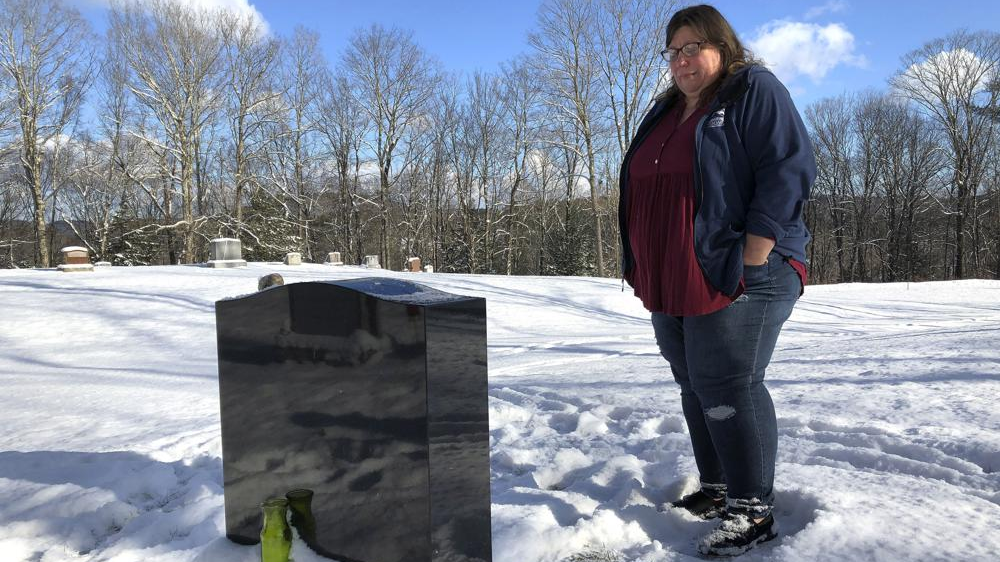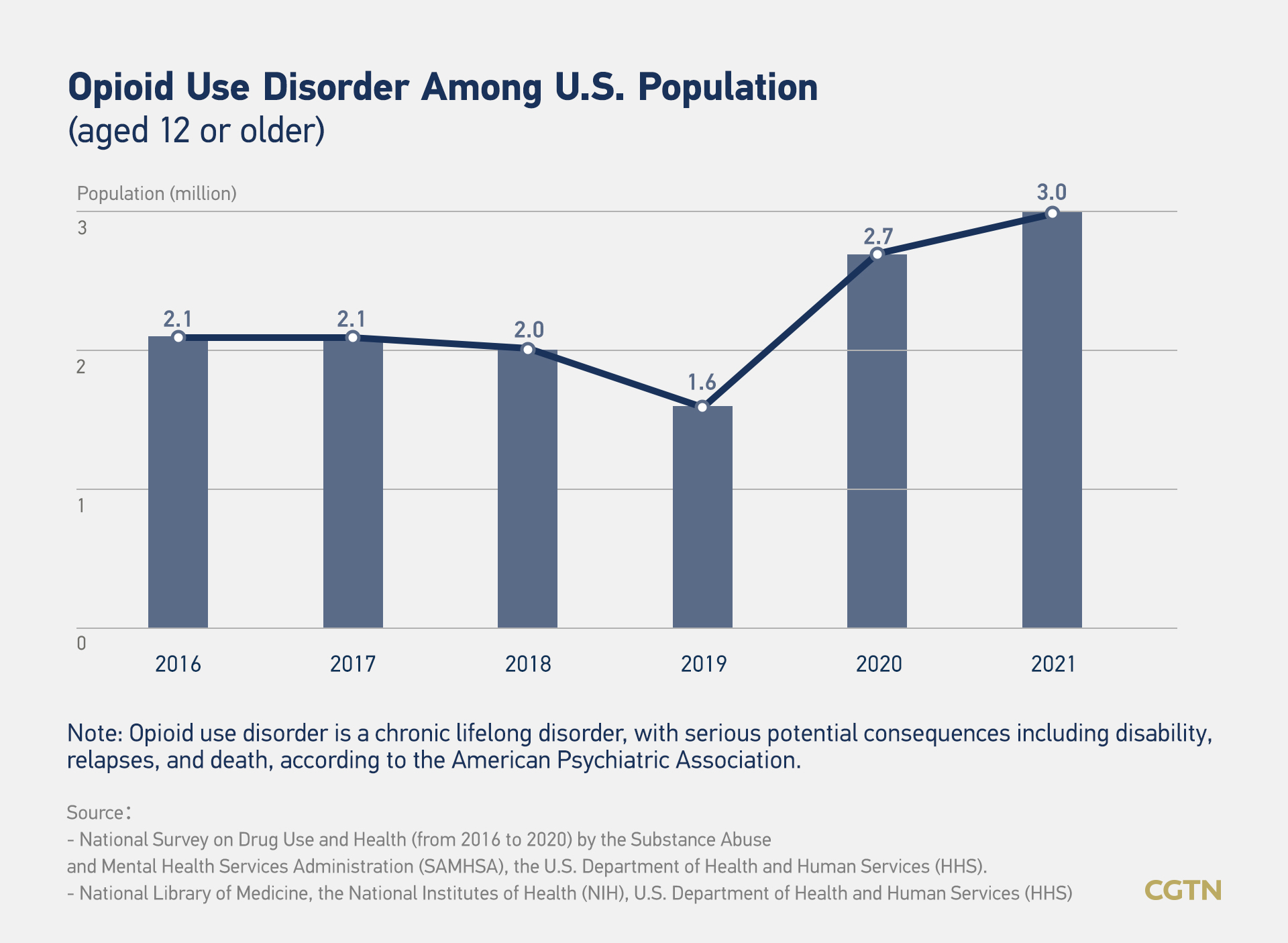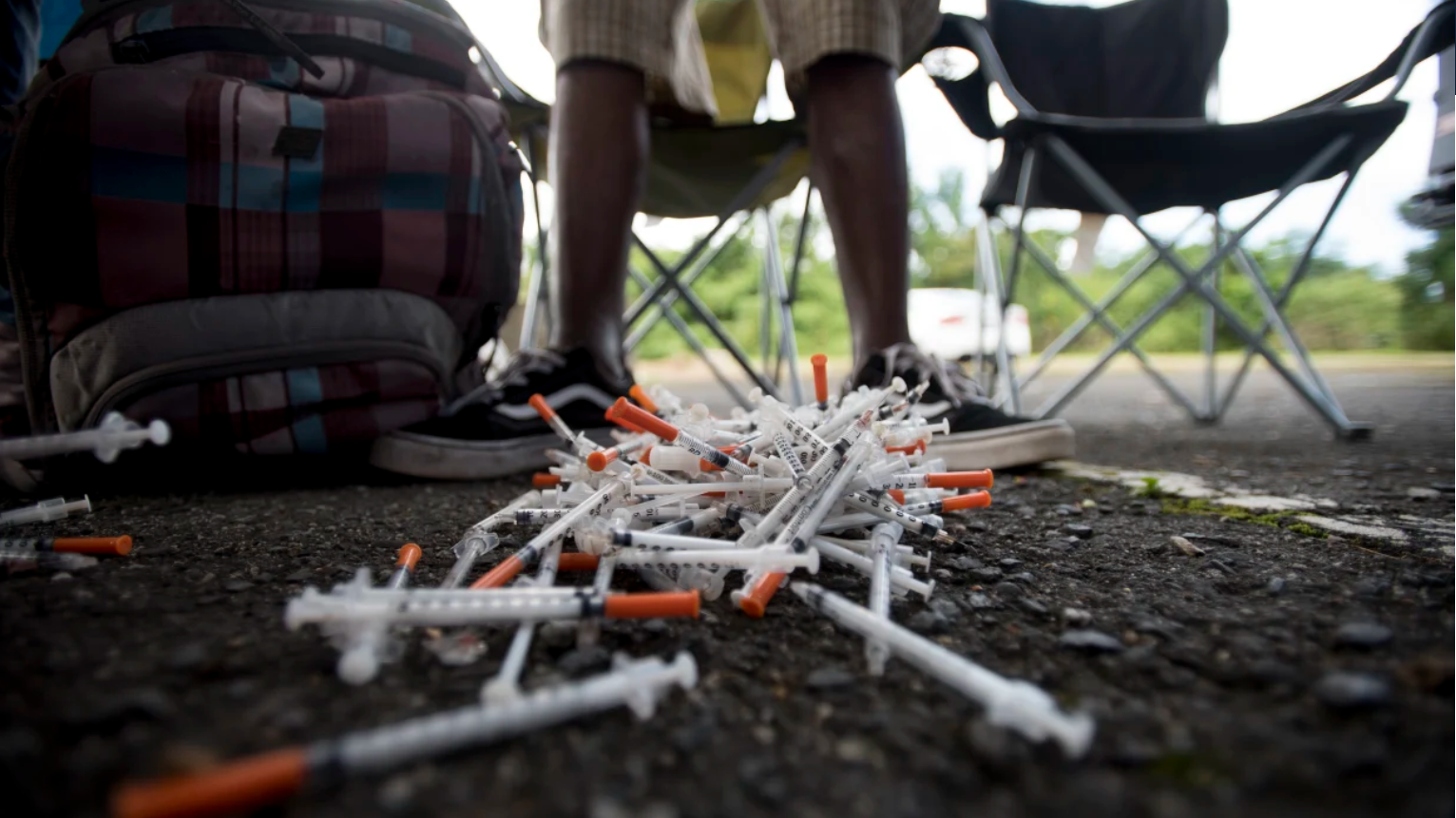05:09

It was November 2021. Ruby was found unconscious at home in Brooklyn by her father. The 10-month-old was rushed to hospital, but she could not be saved. The baby girl died from "acute intoxication by the combined effects of fentanyl and heroin," authorities said.
It remains unclear how Ruby ingested the drugs. On the day of her death, her father injected himself with heroin and fell asleep. When the 44-year-old woke, his daughter was unconscious. He was arrested on charges of manslaughter and criminally negligent homicide in April 2022. Less than two weeks later, he died of an accidental drug overdose.
The tragic story is increasingly familiar in the United States. One American died every five minutes from a drug overdose last year, according to estimates from the Centers for Disease Control and Prevention (CDC), with around 107,000 overdose deaths in total, a record high.
"We know the overdose epidemic is ravaging this country," and leaving behind "thousands of grieving families," Dr Bobby Mukkamala, the chairman of the American Medical Association (AMA), said in a statement issued in May 2022.

Deb Walker visits the grave of her daughter, Brooke Goodwin, who died of a fatal overdose of the powerful opioid fentanyl and xylazine, an animal tranquilizer that is making its way into the illicit drug supply, at the age of 23, Chester, Pennsylvania, U.S., December 9, 2021. /AP
Deb Walker visits the grave of her daughter, Brooke Goodwin, who died of a fatal overdose of the powerful opioid fentanyl and xylazine, an animal tranquilizer that is making its way into the illicit drug supply, at the age of 23, Chester, Pennsylvania, U.S., December 9, 2021. /AP
Opioids, often prescribed by doctors, are the main driver of the surge in overdose deaths. In 2020, nearly 75 percent of overdose deaths involved the drugs, according to the CDC. The opioid dispensing rate is high – over 43 prescriptions per 100 people in 2020. In some counties, the rates were nine times higher.
Prescription opioids are supposed to be used to treat acute pain, and in cancer treatment or end-of-life care. They can cause drowsiness, euphoria or even respiratory depression if taken in high doses.
Opioids can also be highly addictive. Around 8 to 12 percent of people using an opioid for chronic pain develop an opioid use disorder, according to the National Institutes on Drug Abuse (NIDA). The CDC describes an opioid use disorder as "unsuccessful efforts to cut down or control use, or use resulting in social problems and a failure to fulfill obligations at work, school, or home."

Among synthetic opioids, fentanyl is a major contributor to overdoses in the U.S. It can be up to 50 times stronger than heroin and 100 times stronger than morphine.
Illicitly manufactured fentanyl is often added to other drugs to make them cheaper but more powerful. It's almost impossible for users to know their drugs are laced with fentanyl, which greatly increase the risk of overdose, before it's too late.
Law enforcement seizures of pills containing fentanyl increased nearly 50-fold from 2018 to 2021, according to a study funded by NIDA and published in Drug and Alcohol Dependence in 2022.
"An increase in illicit pills containing fentanyl points to a new and increasingly dangerous period in the United States," said Nora D Volkow, MD, director of NIDA in a press release. "Pills are often taken or snorted by people who are more naive to drug use, and who have lower tolerances. When a pill is contaminated with fentanyl, as is now often the case, poisoning can easily occur."

A man living on the streets displays what he says is the synthetic drug fentanyl, San Francisco, California, U.S., February 27, 2020. /Reuters
A man living on the streets displays what he says is the synthetic drug fentanyl, San Francisco, California, U.S., February 27, 2020. /Reuters
A transport hub amid U.S. drug epidemic
Thousands of kilometers from the U.S. mainland lies the commonwealth of Puerto Rico, an unincorporated U.S. territory that has become a gateway to drugs entering the 50 states.
Most of the drugs on the U.S. mainland come from South America. Drugs are transported by speedboats and fishing vessels, which usually travel from Colombia and Venezuela and make a stop in the Dominican Republic. There, drugs are collected and transported to other destinations, including Puerto Rico.
Since the late 1980s, Puerto Rico has been a transport hub for South American drugs to the United States. The island lies in the northeastern edge of the Caribbean Sea, 1,750 kilometers southeast of Florida as the crow flies. As well as its geographical benefits, its commonwealth status makes it attractive to drug traffickers. Once their cargo enters Puerto Rico, it can be transported into the U.S. without customs controls.
Cocaine is the major drug threat in Puerto Rico. Approximately 80 percent of cocaine trafficked through Puerto Rico is shipped to U.S. East Coast cities, while the rest is consumed in the local market, according to the U.S. Government Publishing Office. In April 2021, cocaine worth $50 million was seized, a record for the territory's police department.
However, commingled with cocaine on shipments is heroin, which is widely consumed and available in most drug points, and increasingly fentanyl is being mixed with the drugs before being transported to the U.S. mainland.
"We've found traces of fentanyl in cocaine and heroin, and identified that heroin is being mixed with fentanyl here," said Frank Aquino Ruiz, director of El Punto en la Montaña, a non-governmental organization.

A drug user turns in his used syringes to volunteers from the "Intercambios Puerto Rico" needle exchange program to get new and clean ones, in an area popular with drug users in Humacao, Puerto Rico, December 14, 2018. / AP
A drug user turns in his used syringes to volunteers from the "Intercambios Puerto Rico" needle exchange program to get new and clean ones, in an area popular with drug users in Humacao, Puerto Rico, December 14, 2018. / AP
The unresolved reality of Puerto Rico's drug woes
The drug epidemic on the U.S. mainland is fueling serious problems in Puerto Rico, exacerbating a drug problem in the territory as well as corruption and gang violence.
The Puerto Rican police and the U.S. Drug Enforcement Agency (DEA) have long been engaged in drug interdiction. However, the efforts have been hampered by corruption within the local police force, plagued by accusations of graft for years.
Back in 2010, the FBI conducted one of its biggest police corruption probes in San Juan, the capital of Puerto Rico. Nearly 90 of the 133 people arrested were police officers. They provided security to drug dealers in exchange for payment.
"The problem can't be controlled only with policing measures," noted Jorge Rodriguez Beruff, a former professor at the University of Puerto Rico and an expert in drug trafficking in the region, who said the problem now included a large population of drug addicts and criminal networks on the island.
"It's an underground economy worth millions of dollars," added Luciano Diaz, a retired local police officer.
A snapshot of Puerto Rico today includes rampant gangs fighting to seize control of drug selling and distribution, leading to a spiraling crime rate that surpasses the average in the United States.
Two problems are closely interlinked. An opioid epidemic in the United States, one part of an escalating drug problem. And a U.S. territory not afforded the rights of statehood, but suffering the consequences of its status as a commonwealth and America's addiction to drugs.
According to the 2022 National Drug Control Strategy released by the White House, "People with substance use disorder are in need of compassion and care. With the proper treatment and recovery support services, individuals go on to overcome addiction and lead successful lives."
But the question is how long the people will have to wait.

